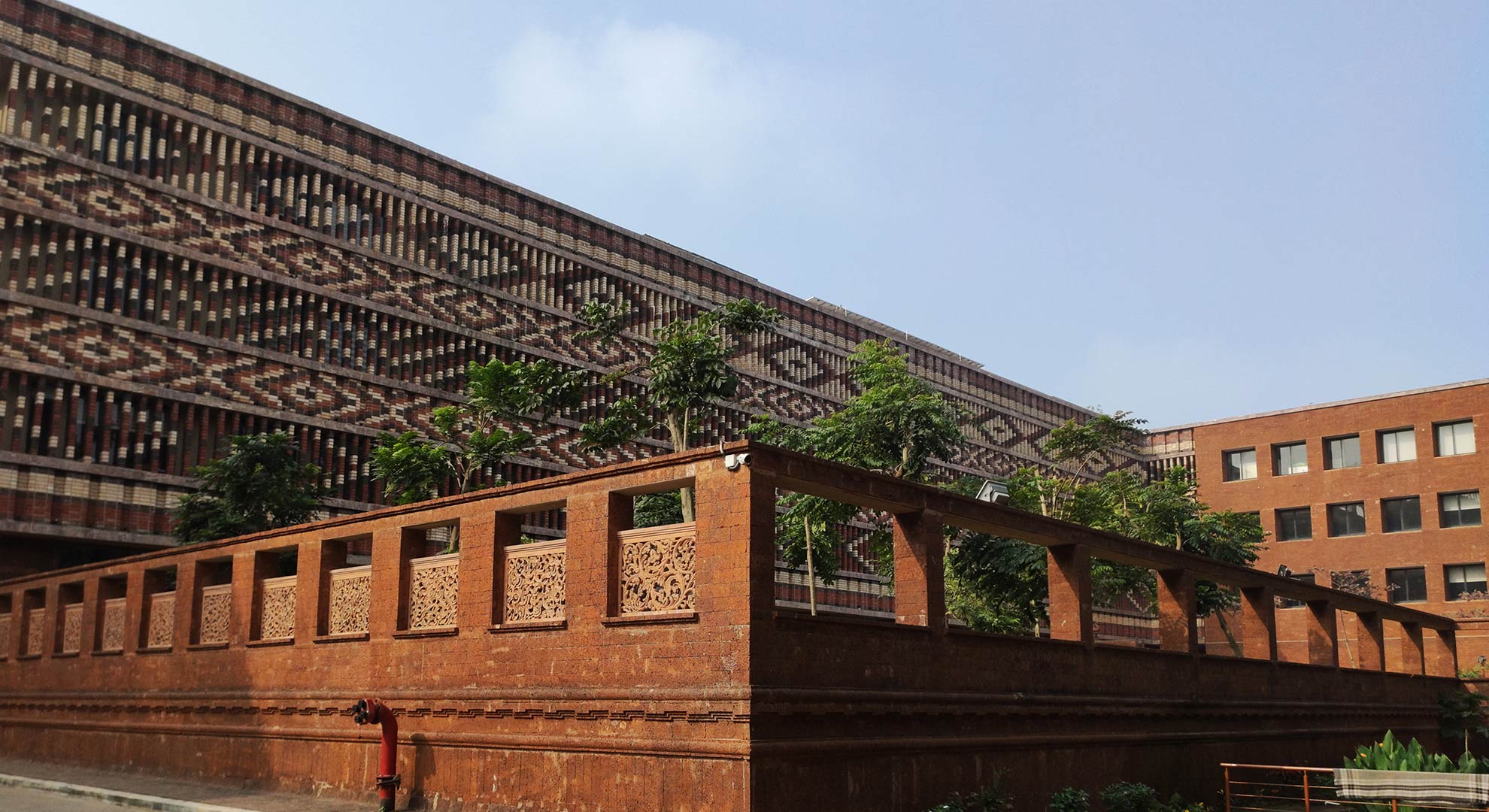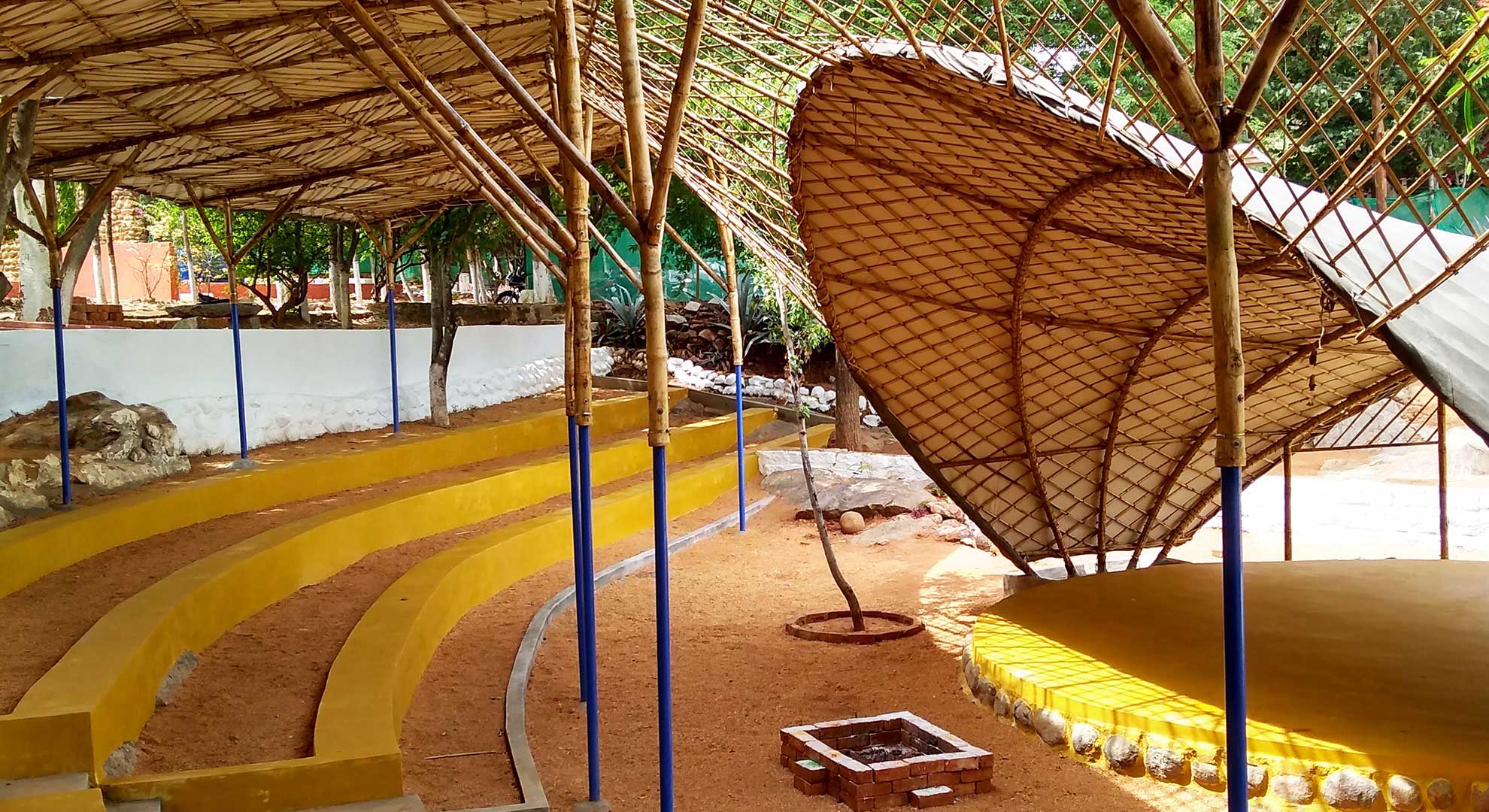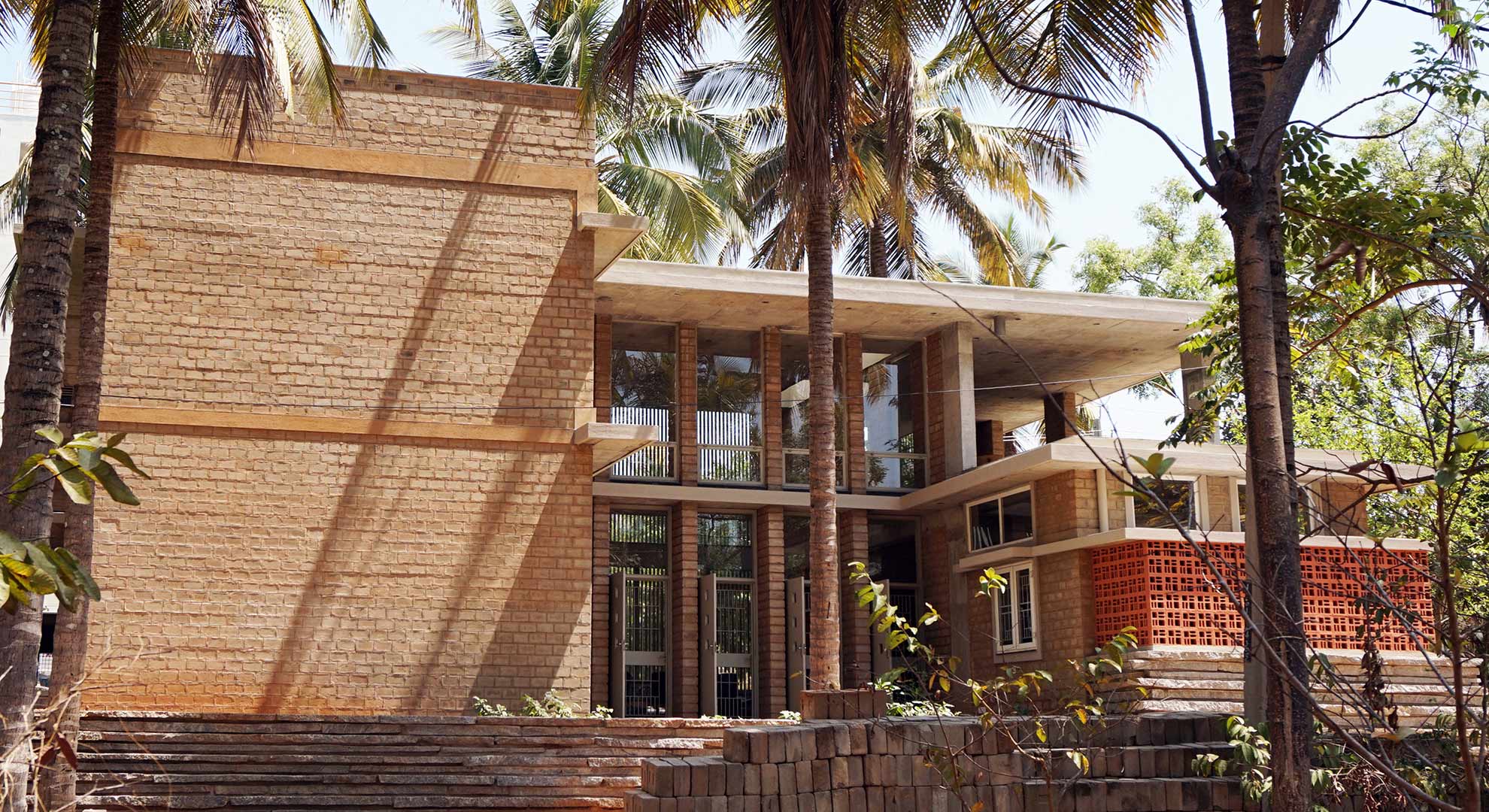Embracing Traditional and Local Methodologies to Respond to the Energy Crisis
Architects in India pledge to build for Mother Earth
The conversations on architecture merely focused on four walls and aesthetics have sunk into oblivion. With globalization, technology’s leap of faith, and issues like climate crisis trending, traditional architecture has tiptoed in to assume frontline duties to confront these issues. The clarion call is for intelligent harvesting of renewable energy and implementing energy-conservation techniques in buildings, as well as for exploring local and traditional materials and technologies to attain the same goal.
Traditional Indian architecture has inherently been sustainable; seemingly back then it did not need to be categorized under any “buzzword.” Master architects in India—Laurie Baker, BV Doshi, Charles Correa, Shiv Datt Sharma and Raj Rewal—who were the flag-bearers of postindependence architecture in India, emphasized the use of traditional local materials and building practices to conserve energy. Over the next decades, many architects jumped on the bandwagon realizing the need to build responsibly and protect buildings from endangering the environment. Several contemporary architectural practices in India today exemplify this shift in design sensibilities.

Applying traditional knowledge and materials for the future
The Krushi Bhawan in Odisha by Studio Lotus is being applauded worldwide for its aesthetics, as well as its functional, climate-responsive design using traditional resources. Through passive cooling strategies—including an arty double brick facade, staggering masses, water bodies, courtyards, and mechanical vents—the air-conditioning requirement of the building drops to a mere 20%. Studio Lotus and numerous firms and architects in India are known for implementing remarkable passive cooling strategies that create zero/low carbon buildings. Notable examples include Christopher Charles Benninger (Suzlon One Earth Global Corporate Headquarters, Pune), Morphogenesis (upcoming ITC Infotech Campus in Kolkata), Vinod Gupta (Indian Institute of Technology in Gandhinagar) and Studio Decode (upcoming KPCL Headquarters in Raichur).
When one discusses alternative sources of energy, building materials and technologies, the town of Auroville in south India remains unprecedented. Local architects, such as Dhruv Bhasker and Mona Doctor-Pingel build with stabilized earth blocks, earthen plaster, thatch, and sand.
There has been a fondness for traditional materials in India. Neelam Manjunath’s design and research on bamboo and the creation of its construction standards have given a renewed life to the material’s application in India. The 2016 M-Pavilion in Melbourne made in bamboo was an ingenious idea by Bijoy Jain to announce bamboo’s adoption by the global contemporary context. Back in India, Jain continues his successful experiments in handmade architecture through traditional technologies, collaborating with stonemasons and carpenters.

BENGALURU CAMPUS OF THE PEGASUS INSTITUTE, BY NEELAM MANJUNATH/MANASARAM ARCHITECTS IS MADE WITH BAMBOO, LOCAL WOOD, MUD AND STONE. PHOTO © MANASARAM ARCHITECTS
Timber, a most sustainable material, has been a constant in Benny Kuriakose’s architecture. One of the strongest proponents of vernacular architecture in India, Kuriakose’s designs for DakshinaChitra, a heritage museum in Chennai and the Muziris Project in Kerala—the largest heritage conservation project in India—reflects his affinity for eco-friendly materials.
Various promoters of ecological architecture in India have walked the talk of accepting these alternates for their lifestyles too. Shirish Beri, an ardent propagator of sustainable architecture, built his house in Kolhapur using recycled and reused local materials (bricks, autoclaved blocks, stones, Mangalore roofing tiles) with low embodied energy. The house scarcely relies on public utilities like electricity, water, and garbage disposal.
Chitra Vishwanath’s extensive explorations in mud and advocating it as a viable building material were first highlighted when she built her own house in Bengaluru with mud. G. Shankar’s charming home in Trivandrum made of mud and bamboo is symbolic of his legendary expertise in mud houses. Rashmi and Deepak Gupta—celebrated for experimenting with natural materials and design elements like jaalis, vaults, courts—have recently built their new house-cum-design studio in Bengaluru with stabilized mud blocks, a green alternative to regular brick.

IN THEIR HOME-CUM-DESIGN STUDIO IN BENGALURU, ARCHITECTS RASHMI AND DEEPAK GUPTA/D+R DESIGN STUDIO USED STABILIZED MUD BLOCKS. PHOTO © DEEPAK GUPTA
Building close to the earth
The mantra of many architects in India is to build close to the earth; use natural and local materials, such as mud, clay, bamboo, wood, stone, lime, fly ash, brick;
implement energy-saving building technologies; and integrate them with Indian crafts. They have been at the helm of leading revolutions to discourage energy-intensive constructions. The long list includes the late Anil Laul and Revathi Kamath, along with Krishnarao Jaisim, Abhikram Architects, Yatin Pandya, Eugene Pandala, Brinda Somaya, Ashok B Lall, Sanjay Prakash, Shashi Bhooshan, Rahul Mehrotra, Mistry Architects, Gerard Da Cunha, Sanjay M. Patil, Samira Rathod, Karan Grover, Dean D’Cruz, Sathya Prakash Varanashi, Girish Dariyav Karnawat, and many more.
Organizations such as the Hunnarshala Foundation and Shelter Associates, which are led by architects, work with local communities using traditional artisans and building techniques. Didi Contractor, the self-taught nonagenarian architect, continues to inspire generations galore with her work in mud, clay and bamboo. Applause is also in order for the designs of reformist Sonam Wangchuk for his solar mud buildings. Of note is his SECMOL campus in Ladakh that runs entirely on solar energy, in a climate with moderate summers and extreme winters. It is heartening to see younger firms such as Studio Advaita, Made in Earth, and architects such as Dhruvang Hingmire and Priyanka Gunjikar make informed choices to minimize the ecological footprint.
There is an entire barrage of conscious architects in India who have pledged to build for Mother Earth. Unfortunately, more significant still are the number of architects in the country who need to understand this pledge. The much-discussed ruling of the Supreme Court of India permitting anyone to take up architecture-related work without the mandatory architecture council registration has, however, brought back the attention for eco-friendliness to be a part of public conscience, and not restricted to architects . This collective consciousness and a sense of responsible architecture where one’s primary client must be by default the environment itself, needs to be cultivated in everyone, architects and non-architects alike.
